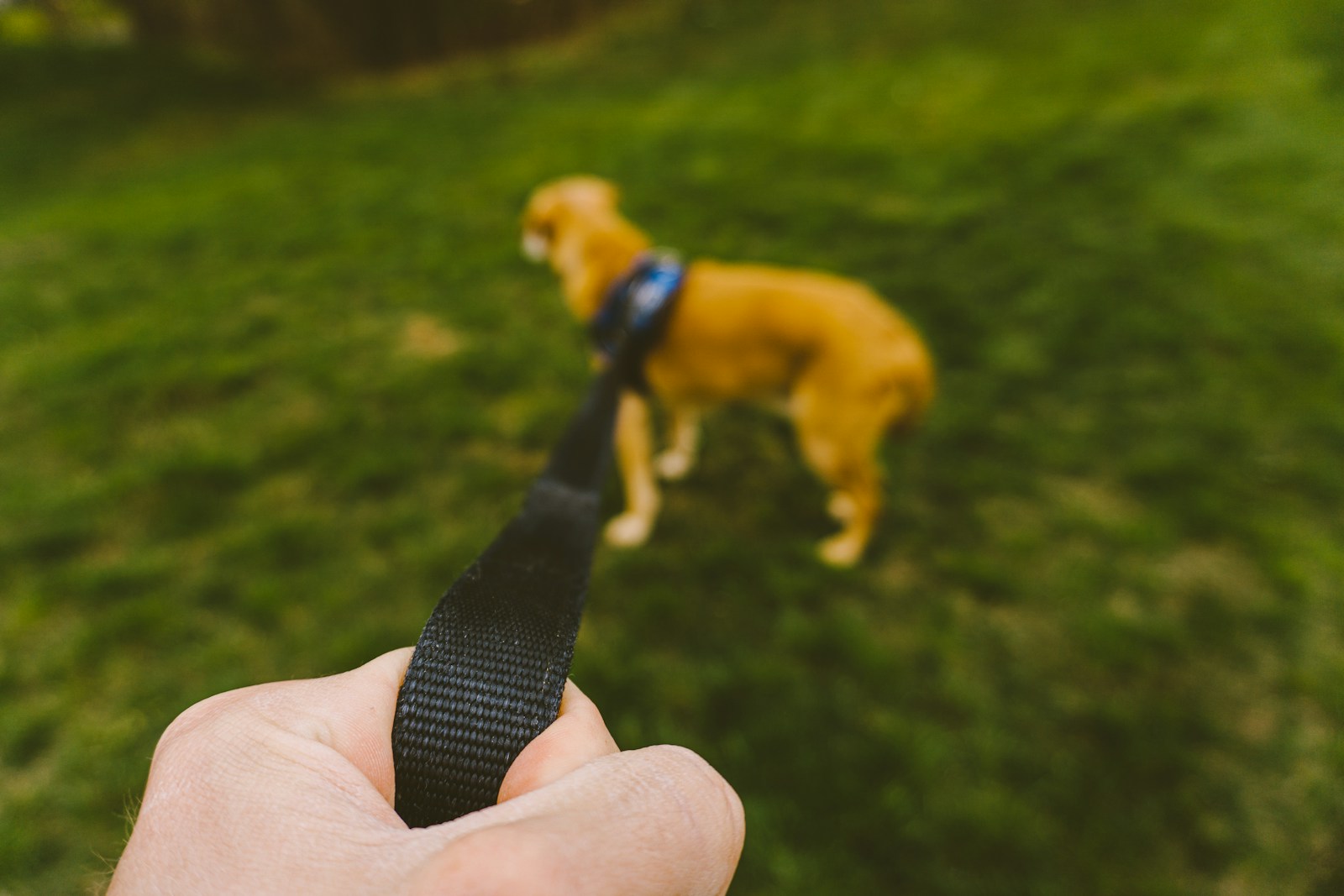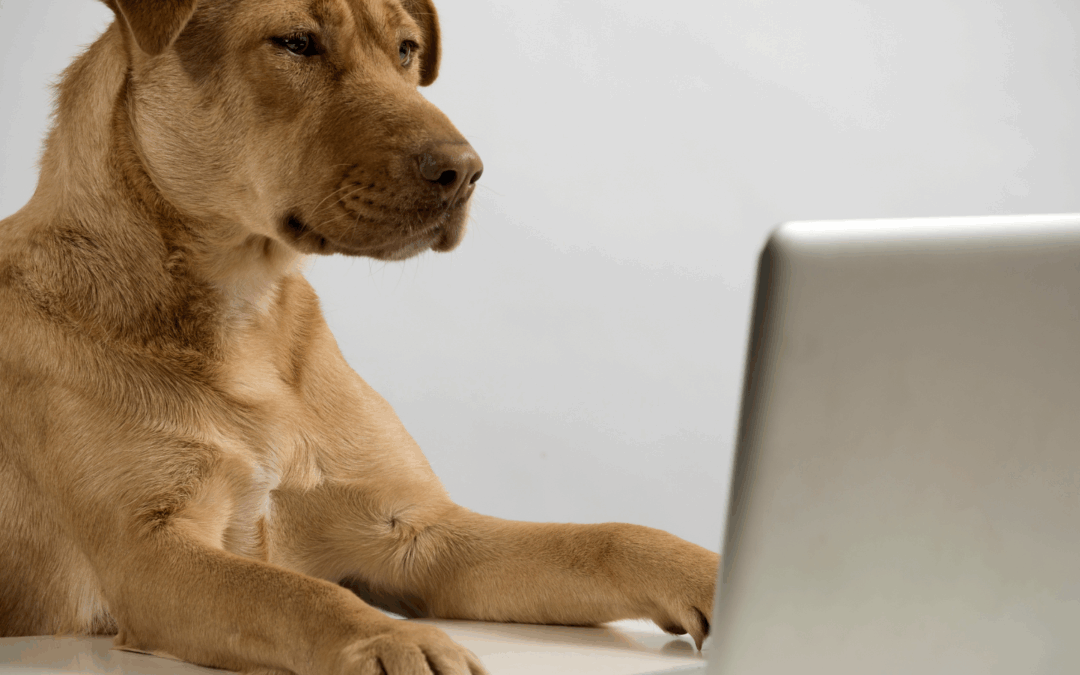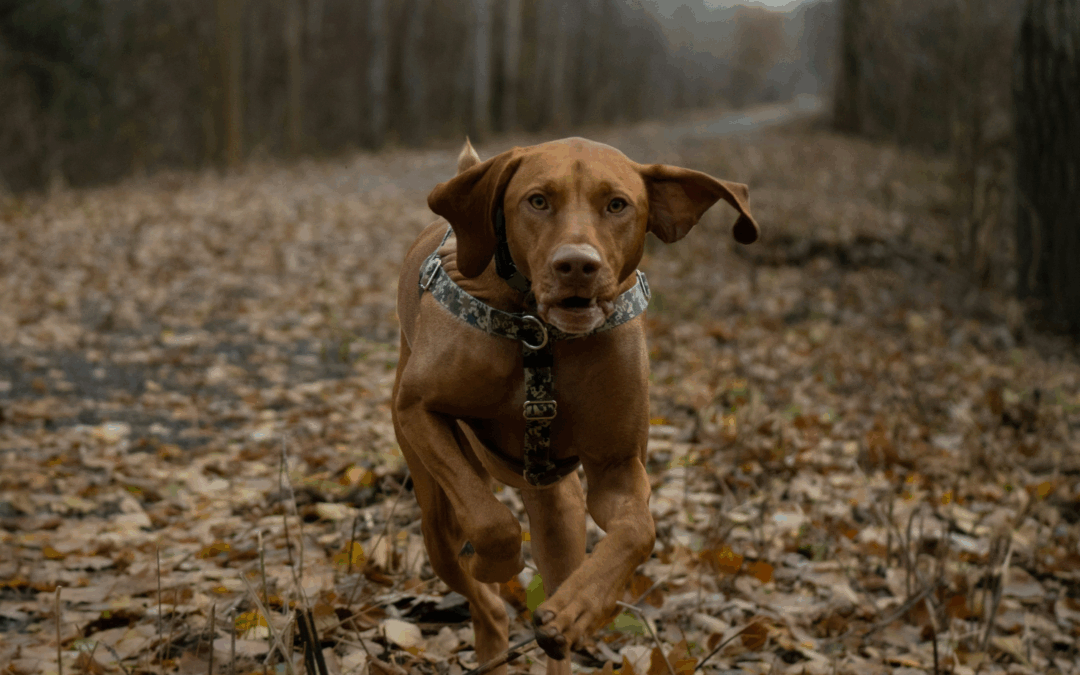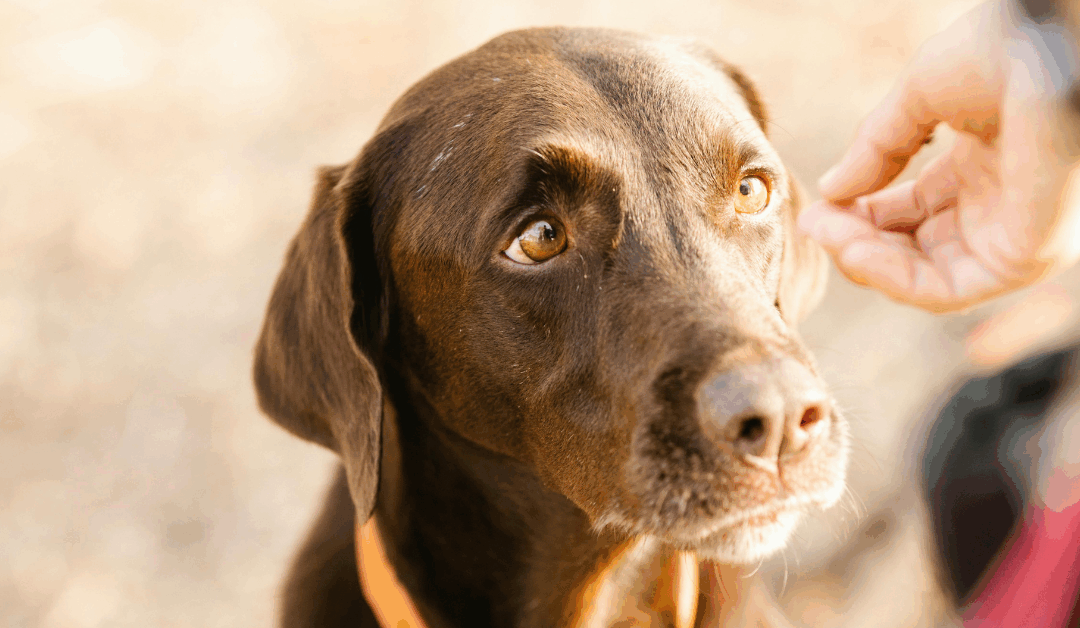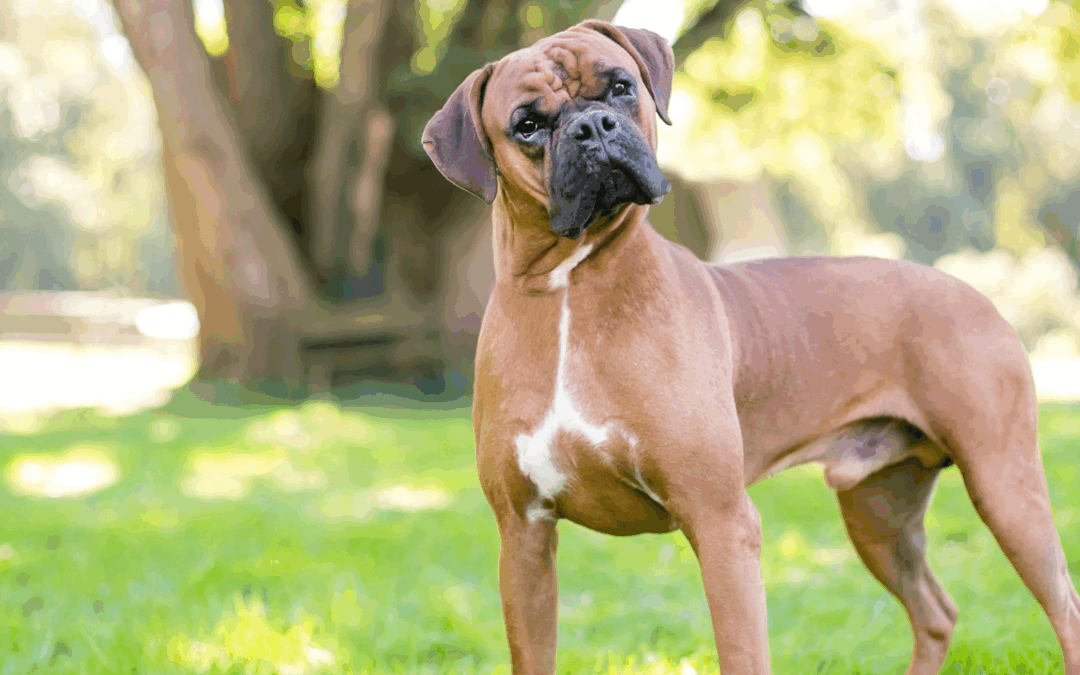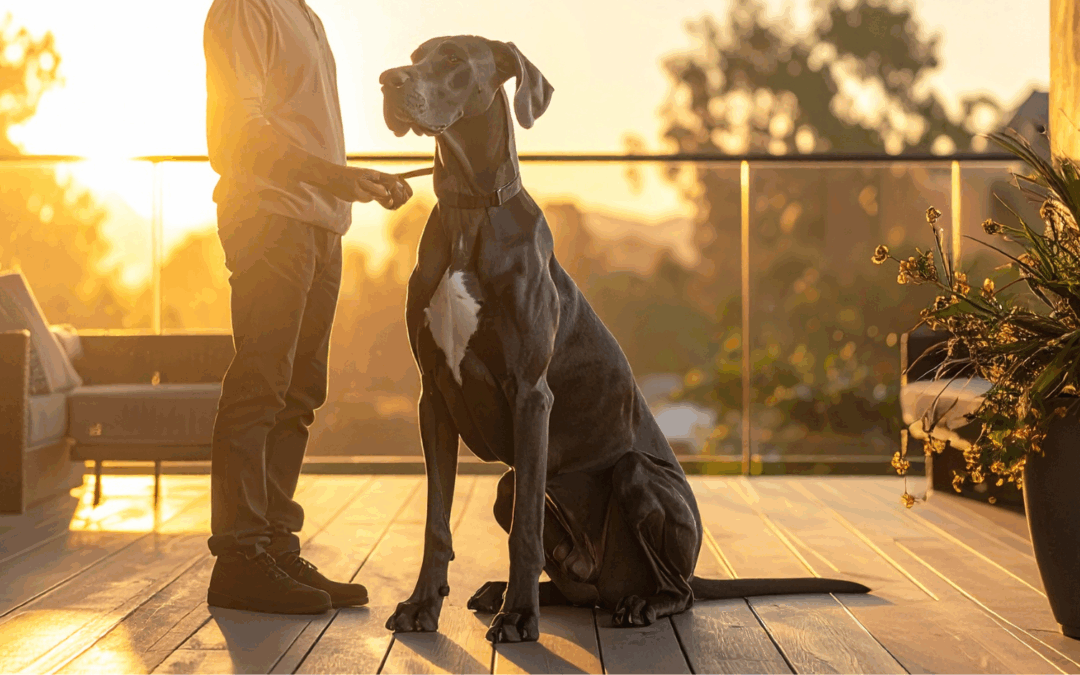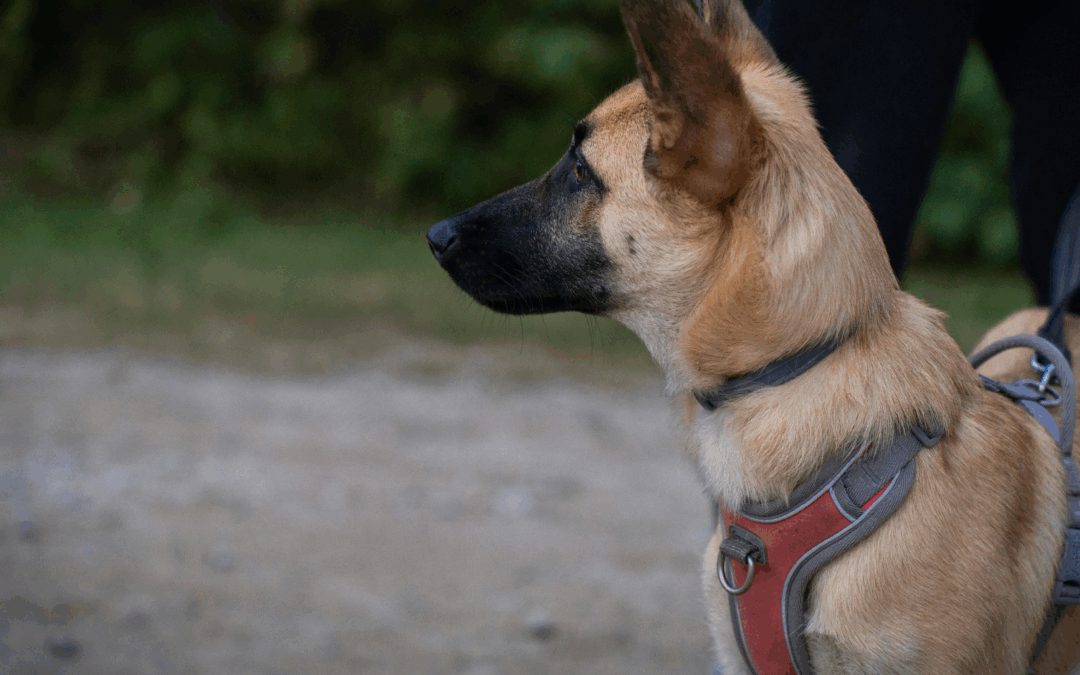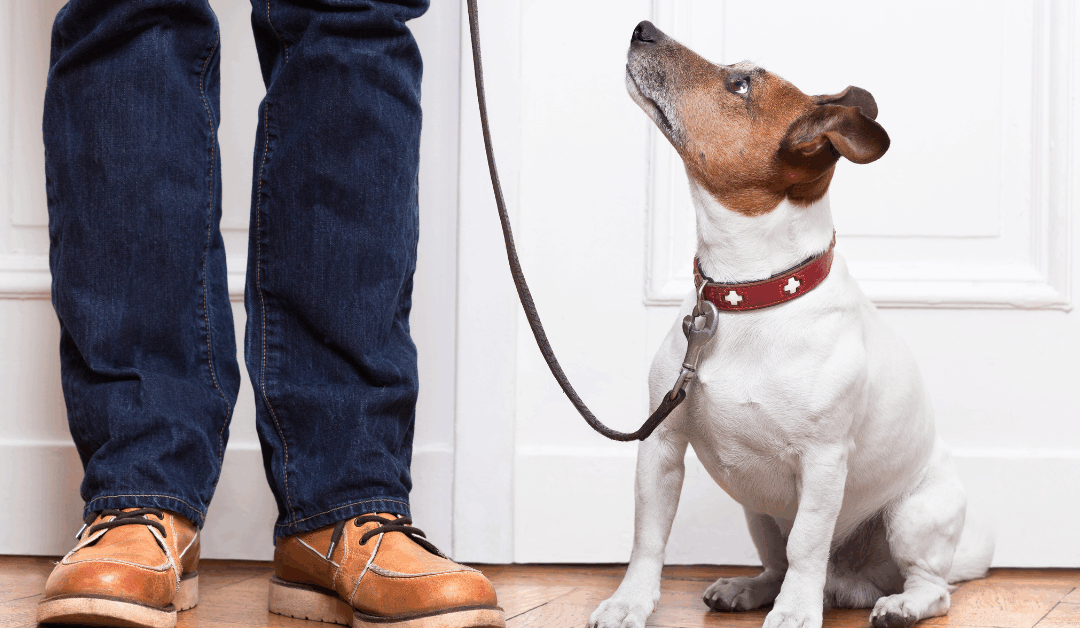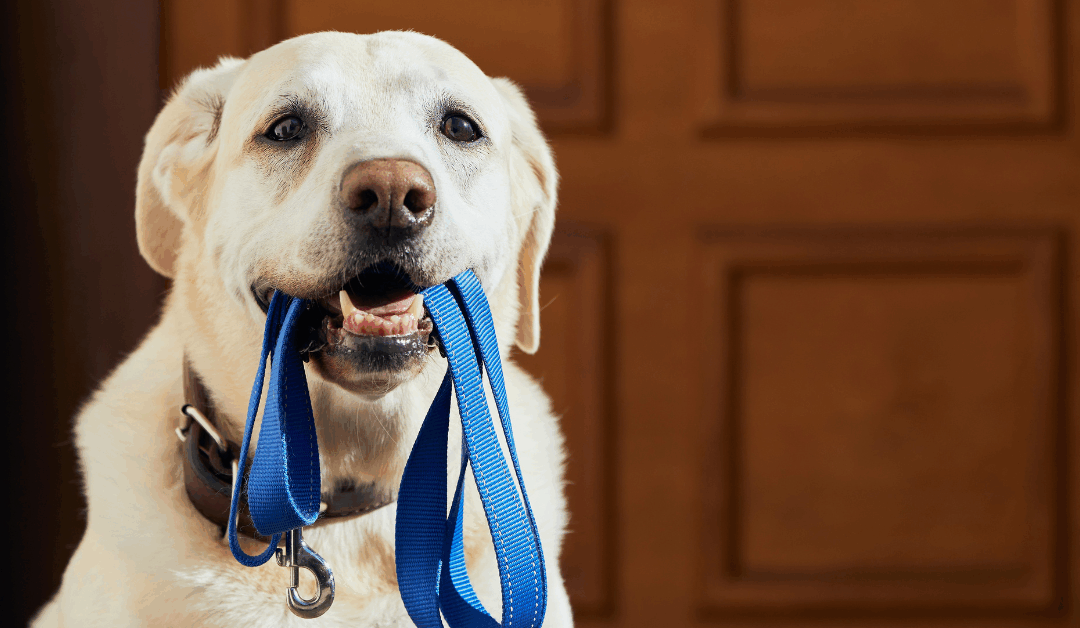Every dog owner knows the frustration of being dragged down the street by an overeager pup or standing motionless while their dog refuses to budge. Leash training transforms these stressful daily walks into enjoyable bonding experiences for both you and your furry companion.
Whether you’re dealing with a brand-new puppy or an older dog who never learned proper leash manners, this comprehensive guide will help you master the art of leash training. From understanding why dogs pull to troubleshooting common challenges, you’ll discover practical techniques that professional dog trainers use to create well-behaved walking partners.
The key to successful dog leash training isn’t just about teaching your dog to walk—it’s about building communication and trust that extends far beyond your daily walks.
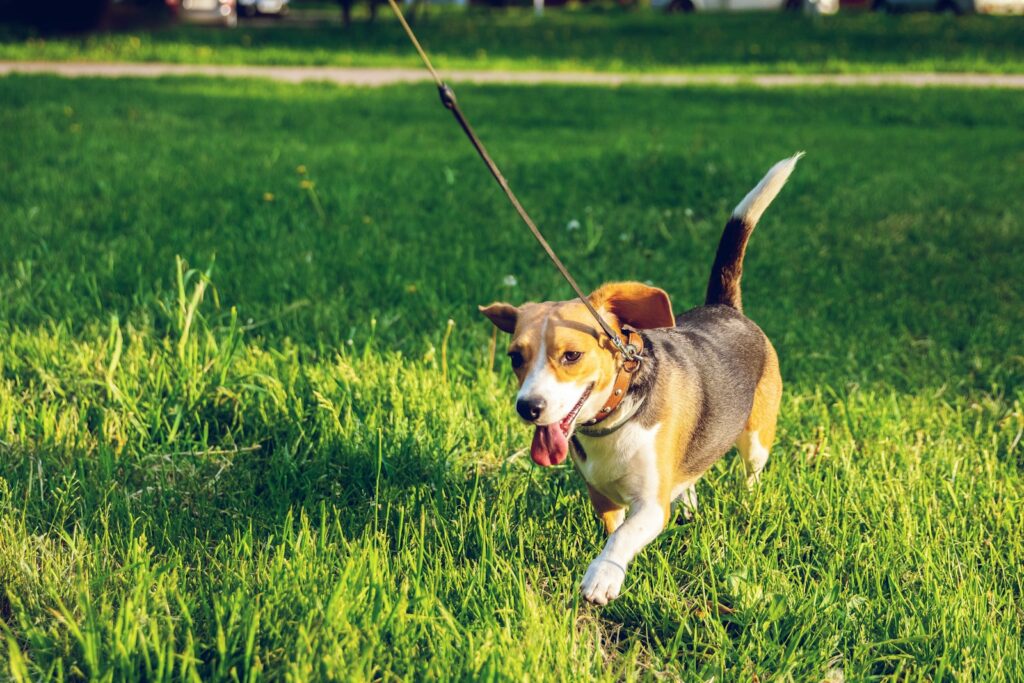
Photo by Artem Beliaikin on Unsplash
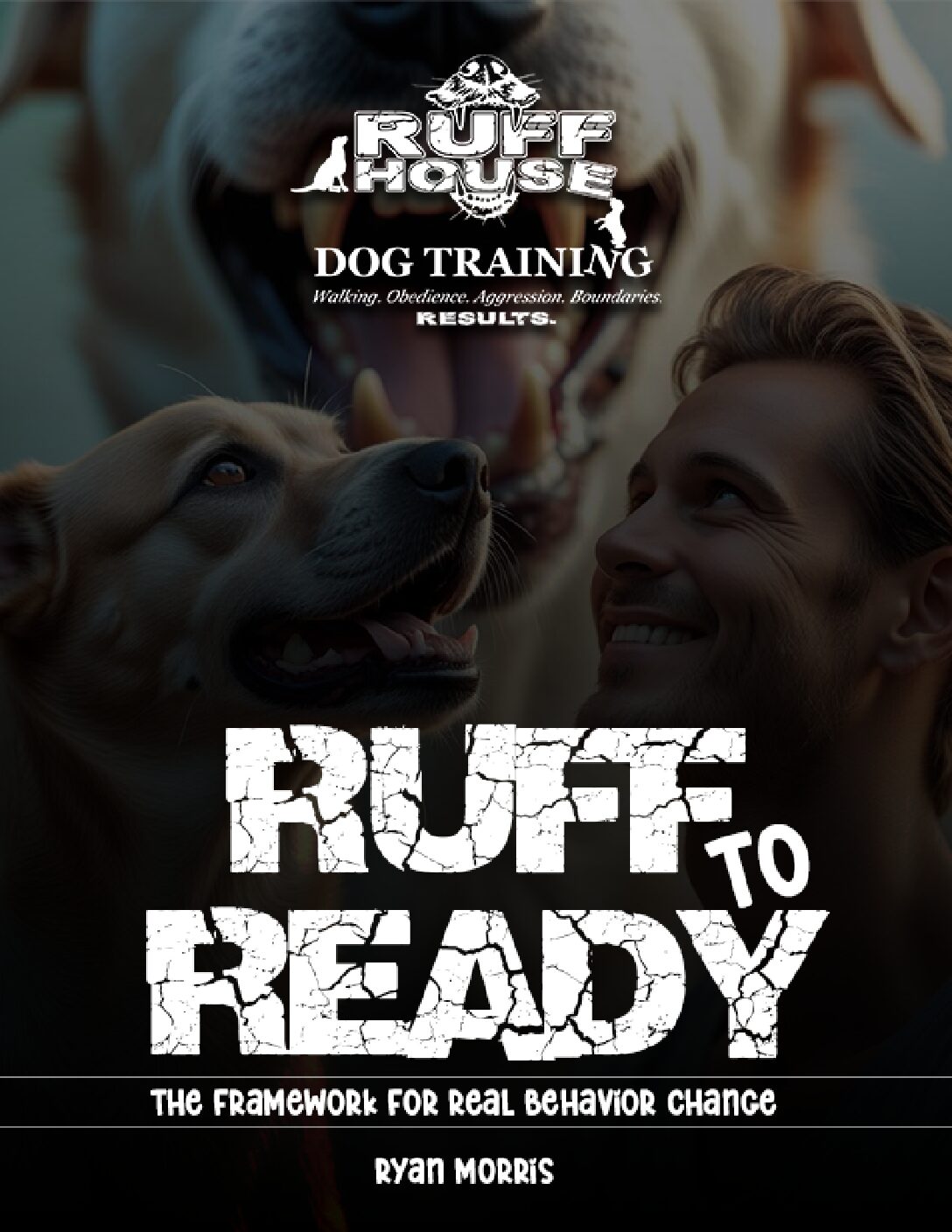
Get the Ruff to Ready framework and start making progress with your dog today.
"*" indicates required fields
Understanding Why Your Dog Pulls on the Leash
Before diving into training techniques, it’s essential to understand why most dogs naturally pull during walks. Dogs experience the world primarily through their noses, and the abundance of scents outside creates an overwhelming sensory experience. When your dog pulls, they’re often following their natural instincts to investigate interesting smells, sights, and sounds.
Many dogs also view walks as high-energy adventures. The excitement of going outside combined with their faster natural walking pace often results in pulling behavior. Additionally, if pulling has previously gotten your dog to their desired destination faster, they’ve learned that this behavior is effective.
Puppies face unique challenges during leash training because they’re still developing impulse control and learning about the world around them. Their curiosity and energy levels can make walking nicely on a leash particularly challenging during the early months.

Photo by Roger Starnes Sr on Unsplash
Essential Equipment for Leash Training
Choosing the right equipment sets the foundation for successful leash training. A well-fitted collar or harness, combined with an appropriate leash, makes a significant difference in your training success.
Collars vs. Harnesses
For most dogs, a standard flat collar works well for leash training. The collar should fit snugly around your dog’s neck but allow you to slip two fingers underneath it. It should not be loose enough for the dog’s head to come through. However, dogs that pull excessively may benefit from a front-clip harness, which redirects their forward momentum to the side, naturally discouraging pulling.
Avoid retractable leashes during training, as they teach dogs that pulling creates more freedom. Instead, use a standard 6-foot leash that provides consistent boundaries and clear communication.
Training Treats and Rewards
High-value treats play a crucial role in positive reinforcement training. Choose small, soft treats that your dog can quickly consume without breaking their focus. Many professional dog trainers recommend using treats that are irresistible to your specific dog, whether that’s tiny pieces of chicken, cheese, or commercial training treats.
Step-by-Step | How To Leash Train
Successful leash training builds gradually from basic concepts to more complex walking skills. This systematic approach ensures your dog develops confidence and understanding at each stage.
Teaching Leash Pressure Response
The foundation of good leash manners is teaching your dog to respond appropriately to leash pressure. When your dog feels tension on the leash, they should learn to move toward you rather than pull away.
Practice this concept indoors by applying gentle pressure to the leash and immediately rewarding your dog when they move in your direction. Start with very light pressure and gradually increase as your dog begins to understand the concept. This exercise teaches your dog that leash pressure is a cue to pay attention to you, not something to fight against.
Getting Your Dog Comfortable with the Leash
Start the leash training process inside your home where distractions are minimal. I recommend keeping the leash on the dog and having the dog attached to you so you can see when they’re about to go, and take them out immediately.
Practice Walking Outside
When transitioning to outdoor practice, start in your front yard or another familiar, low-distraction environment. Many dogs become overstimulated the moment they step outside, so practicing in a controlled outdoor space helps bridge the gap between indoor success and real-world walking.
Begin with just a few steps at a time. Hold the leash with your dog on your preferred side. Start walking and reward your dog for any moments when they’re walking nicely beside you without pulling.

Photo by Maksym Kaharlytskyi on Unsplash
Training Techniques That Work
Professional dog trainers rely on several proven methods to teach proper leash manners. These techniques focus on clear communication and balanced reinforcement methods rather than punishment or force.
Balanced Training Methods
Balanced training methods focus on using a combination of positive reinforcement and clear boundaries to teach desired behaviors effectively. This approach recognizes that while rewards like treats, praise, and play are powerful motivators, setting firm boundaries and providing consistent feedback are equally important in shaping a dog’s behavior.
With balanced training, positive reinforcement is used to encourage proper actions, such as rewarding your dog when they walk calmly by your side on a leash. At the same time, gentle corrections, negative reinforcement, or redirection helps guide your dog when unwanted behaviors, like pulling or lunging, occur. It’s crucial to apply corrections appropriately, always ensuring they are humane and tailored to your dog’s temperament.
One of the key advantages of balanced training is its versatility. It addresses various learning styles and allows flexibility to adapt techniques based on the dog’s personality and progress. This method creates a clear line of communication between you and your dog, fostering mutual trust and respect. When applied consistently, balanced training can help address common challenges, like leash pulling, and promote a well-rounded, obedient companion.
Advanced Leash Training Skills
Once your dog masters basic leash manners, you can introduce more sophisticated skills that make walks even more enjoyable and manageable.
Teaching Focus and Attention
Training your dog to check in with you during walks creates a stronger connection and prevents many behavioral issues before they start. Practice calling your dog’s name during walks and rewarding them immediately when they make eye contact with you.
Start this training in low-distraction environments and gradually increase the level of challenge. Eventually, your dog should automatically check in with you periodically during walks, even without being called.
Managing Distractions
Real-world walking involves countless distractions: other dogs, people, interesting smells, squirrels, and unusual sounds. Teaching your dog to navigate these distractions while maintaining good leash manners requires systematic exposure and practice.
Start with mild distractions at a distance where your dog notices them but can still focus on you. Reward your dog for choosing to pay attention to you instead of the distraction. Gradually decrease the distance to distractions as your dog’s skills improve.
Walking with Multiple Dogs
If you have more than one dog, walking multiple dogs requires additional skills and preparation. Start by ensuring each dog can walk well individually before attempting to walk them together.
When walking multiple dogs, use separate leashes for better control, and consider the dynamics between your dogs. Some dogs walk better together, while others may compete for position or become overexcited in each other’s presence.
Common Leash Training Challenges and Solutions
Even with consistent training, most dog owners encounter specific challenges during the leash training process. Understanding how to address these common issues helps maintain progress and prevents frustration.
Dealing with Excessive Pulling
Dogs that have developed strong pulling habits require patience and consistency to retrain. These dogs have learned that pulling is effective, so changing this behavior takes time and dedication.
For chronic pullers, when your dog begins to pull, consider using a front-clip harness temporarily to reduce the physical strain on both you and your dog while training progresses. Focus on rewarding any moment of loose-leash walking.
Lunging at Other Dogs
Dog reactivity on leash is a complex issue that often requires professional help. If your dog lunges, barks, or shows aggressive behavior toward other dogs during walks, prioritize safety and consider working with a professional dog trainer.
In the meantime, maintain distance from other dogs and focus on redirecting your dog’s attention to you before they become overstimulated. Carry high-value treats and practice attention exercises regularly.
Fear or Anxiety About Walking
Some dogs, particularly rescues or those with limited socialization, may show fear or anxiety about walking outside. These dogs might freeze, try to return home, or show signs of stress during walks.
For anxious dogs, progress slowly and make walks as positive as possible. Start with very short distances and gradually increase as your dog’s confidence builds. Allow your dog to set the pace initially, and use plenty of treats and encouragement.
Puppy-Specific Challenges
Puppies face unique leash training challenges due to their developmental stage. Young puppies have short attention spans, limited impulse control, and high energy levels that can make traditional training techniques less effective.
Keep training sessions short—just a few minutes at a time for very young puppies. Focus on making the leash a positive experience rather than demanding perfect behavior immediately. Puppies often benefit from more frequent breaks and higher rates of reinforcement.

Let Ruff House Dog Training Help!
Does your dog know how to sit, lie down, walk on a leash, etc., but doesn’t do it consistently, nor do they do it outside?
“My dog is fine until he sees another dog.”
“My dog listens when we are in the house, but as soon as we go outside,it instantly goes away.”
Ruff House Dog Training to expand on and refine the obedience your dog already knows, creating effective communication and self-worth for the dog.
Leash Training Troubleshooting
When leash training isn’t progressing as expected, it’s important to evaluate your approach and make necessary adjustments.
Consistency Is Key!
The most common reason for slow progress in leash training is inconsistent application of rules and rewards. If family members handle the leash differently or allow pulling sometimes but not others, your dog receives mixed messages that slow learning.
Ensure everyone who walks your dog uses the same techniques and maintains the same expectations. Write down your training approach if necessary to maintain consistency across all family members.
Adjusting for Your Dog’s Breed and Personality
Different breeds and individual dogs have varying motivations and learning styles. Some dogs are highly food motivated, while others respond better to praise or play. Herding breeds might be more prone to pulling, while hounds may be more distracted by scents.
Observe what motivates your specific dog and adjust your training approach accordingly. High-energy breeds might need more physical exercise before training sessions, while anxious dogs may require a gentler, slower approach.
When to Seek Professional Help From A Dog Trainer | Ruff House Dog Training
While many dogs can be successfully leash trained by their owners, some situations benefit from professional guidance. Consider working with professional dog trainers like Ruff House Dog Training if your dog shows aggression toward people or other dogs during walks, if you’re not seeing progress after several weeks of consistent training, or if leash-related behavior problems are affecting your relationship with your dog.
Ruff House Dog Training can identify specific issues you might miss and provide customized training plans for your dog’s unique needs. They can also teach you proper technique and timing, which are crucial for effective training. If you’re looking for a fun, safe place where your dog can play, consider visiting your local indoor dog park.
Making Walks Enjoyable for Both of You
The ultimate goal of leash training goes beyond simply preventing pulling. Well-trained leash manners create opportunities for enjoyable walks that strengthen the bond between you and your dog while providing necessary exercise and mental stimulation.
Building a Walking Routine
Consistency in your walking routine helps your dog understand expectations and reduces anxiety or overexcitement. Try to walk at similar times each day and use the same preparation ritual before leaving the house.
A predictable routine also helps your dog settle into appropriate walking behavior more quickly, as they learn what to expect during different parts of the walk.
Incorporating Training into Daily Walks
Rather than separating training sessions from regular walks, incorporate training elements into your daily walks. Practice attention exercises, direction changes, and stopping exercises throughout your regular walking route.
This approach helps your dog generalize their training to real-world situations and maintains their skills over time. It also makes daily walks more engaging for both you and your dog.
Long-term Maintenance
Even after your dog masters leash training, occasional refresher training helps maintain good habits. Dogs can develop bad habits if training lapses, so continued reinforcement of good behavior is important.
Continue carrying treats occasionally during walks and praise your dog for good leash manners. This ongoing positive reinforcement helps ensure that your dog’s excellent walking behavior continues for years to come.
Transform Your Daily Walks With Dog Leash Training
Successful leash training creates a foundation for a lifetime of enjoyable walks with your dog. The techniques outlined in this guide require patience and consistency, but the results are worth the effort. Remember that every dog learns at their own pace, and progress may come in small steps rather than dramatic improvements.
The key to lasting success lies in understanding your dog’s individual needs, maintaining consistent training practices, and focusing on positive reinforcement rather than punishment. With dedication and the right approach, even the most challenging pullers can learn to walk politely on a leash.
Start with the basics, be patient with the process, and celebrate small victories along the way. Your future self—and your dog—will thank you for the investment in proper leash training.
